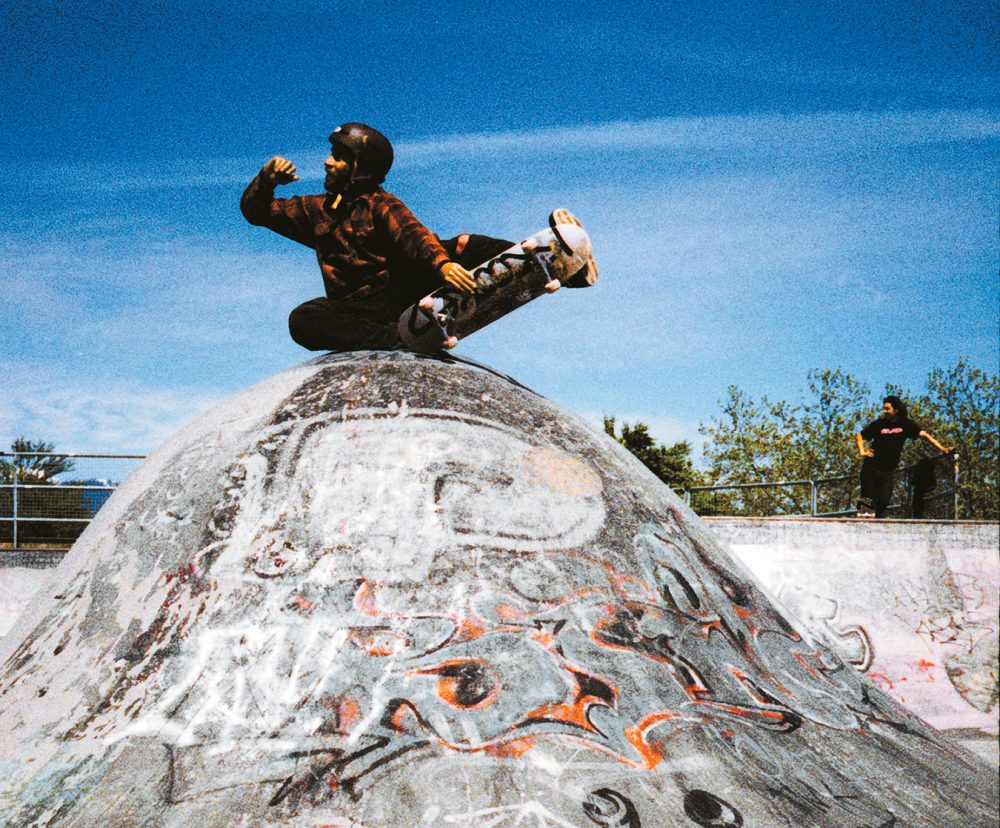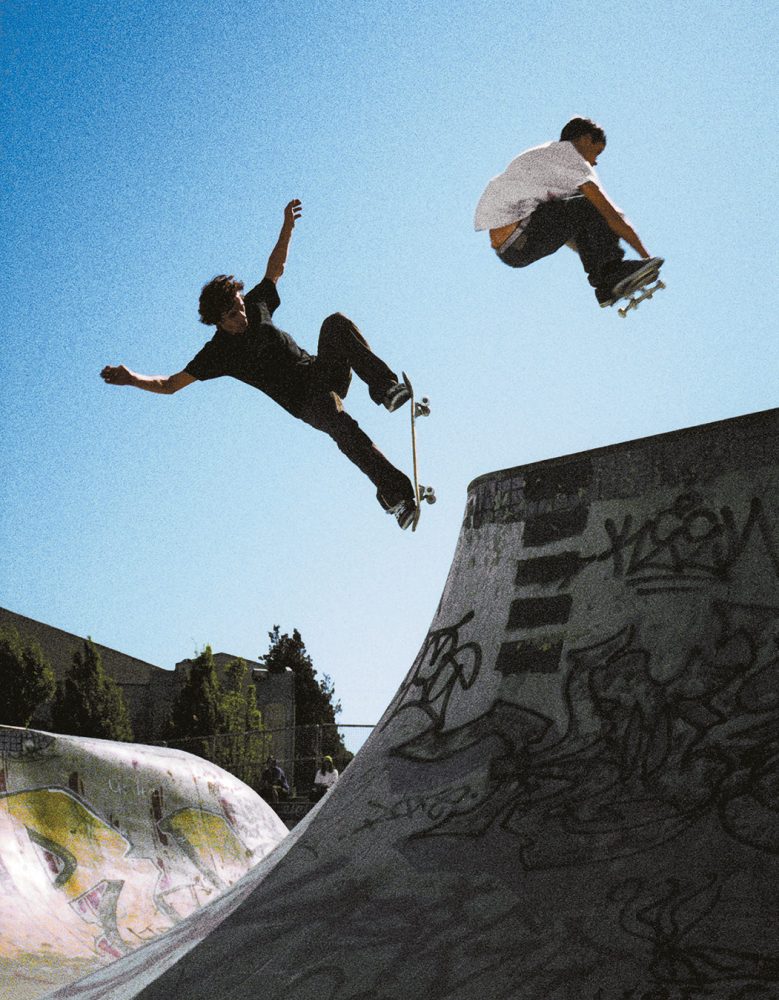If Vancouver is considered “Hollywood North” for the prominence of our film and television industry, then it can most definitely be considered “Venice North” for the sport and corresponding industry surrounding four small wheels and a seven-ply plank of maple. Venice, California, is the birthplace and worldwide mecca for all things skateboarding, and has always been a dream destination for the world’s best wood-pushers. With more than 300 days of sunshine a year, there are limitless skateboarding opportunities. While many Vancouver skateboarders may envision living in that southern Californian city, even more skateboarders across Canada dream of heading west to our fair city. Even though it’s wet in Vancouver’s winter months, you can skateboard almost year-round without fear of frostbite.
The global boom of skateboarding in the eighties was further ignited locally by Expo 86, which brought several international professionals to town for a World Skateboarding Championship. The sport has been enjoying a healthy existence in Vancouver ever since; the lion’s share of the Canadian skateboarding industry has pretty much always resided here. But it’s not just the lack of snow that draws Canada’s skateboarders here, it’s the possibility of making money at it, as a brand ambassador or rep, or with any of the associated businesses that keep the industry’s wheels turning. The biz provides many jobs: two of the three national skateboarding magazines that it supports are here; the local specialty shops such as PD’s Hot Shop, Antisocial, Boulevard and Underworld; the clothing companies; the hard-goods companies that produce the decks and wheels; and the distributors of popular international brands that also do well here.
The city of Vancouver and its surrounding municipalities have recognized the significance of the skateboarding community. Today there are more than 25 free public skate parks within a 45-minute drive from the city’s core, including a large one under the Georgia Street Viaduct, one up the street in Strathcona and yet another just north of Kerrisdale.
The skate parks make for ideal practising grounds, but these confined spaces commissioned by our parks boards simply can’t compete with actually skateboarding in the city itself. Street skating has been the most popular form of skateboarding for decades, and it forces the skateboarder to think about the city differently than the average pedestrian. Skateboarders are always looking for new ways to use the city, ways it may not have been designed or intended for. Handrails, marble ledges, staircases, bus benches, pretty much every aspect of an urban center like Vancouver—no one appreciates these more than the city’s skateboarding community.
While skateboarders see street skating as essential to their enjoyment of the sport, and to life in Vancouver, over the years many people have disagreed. Perhaps this is why the sport has never truly been accepted by the mainstream, and why skateboarders have gotten their infamous reputation. Vancouver’s urban planners and architects have long known that skateboarders utilize city property as skating obstacles. Since the nineties, they have been designing things downtown to be “unskateable”. They screw little knobs into the rails and ledges, and make the tops of popular staircases too rough to roll over. But these challenges hardly deter most skateboarders. Instead, it forces them to think even further outside of the box than they’re used to, to find ways around the new obstacles, and get to the good old skateable ones. Creative thinking has always been a built-in component of the sport.
This kind of creative thinking extends even further within Vancouver’s skateboarding community. Unfornately life as a skateboarder in Canada’s wet, West Coast city does have its seasons. There is that pesky rain, which means skateboarders have to find other pastimes other than just getting on the board. From this, skateboarding in Vancouver has more to it than just the industry or the sport. There is an entire skateboarding culture that has emerged from it. A creative culture.
In fact, many people who are immersed in this culture don’t even skateboard that much, if at all. It attracts artists, musicians and entrepreneurs, all of whom are drawn to more ideological aspects of skateboarding and the DIY mentality that serves as the skateboarding industry’s driving force. It is creativity that keeps Vancouver’s skateboard culture alive, and the combination of all these elements that keeps Vancouver a dream destination for many skaters.
Photos: ©Bob Kronbauer.










